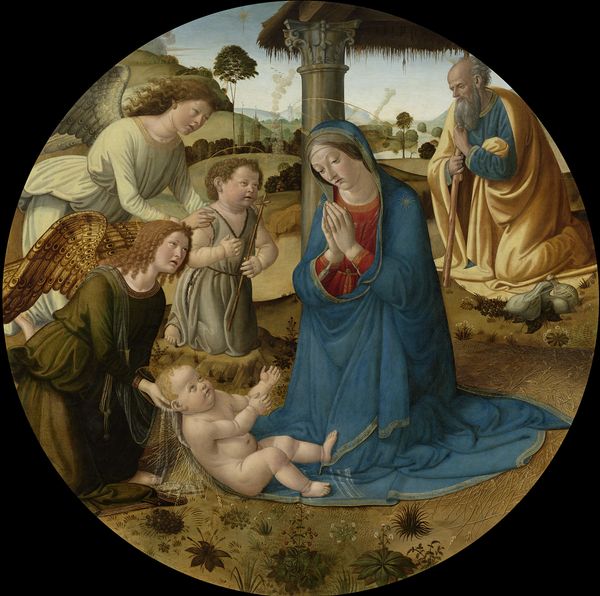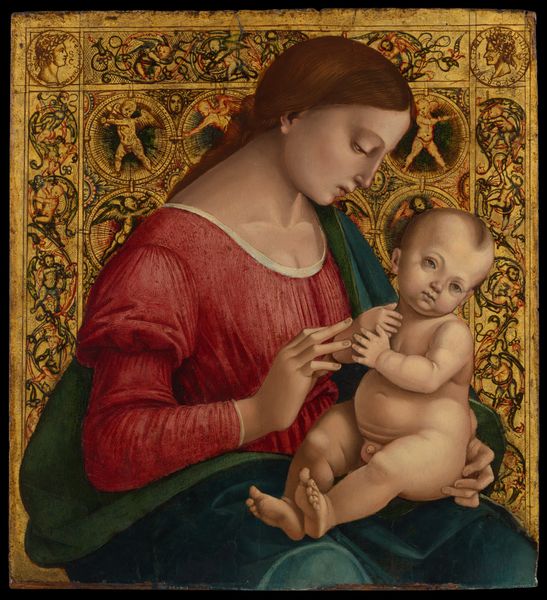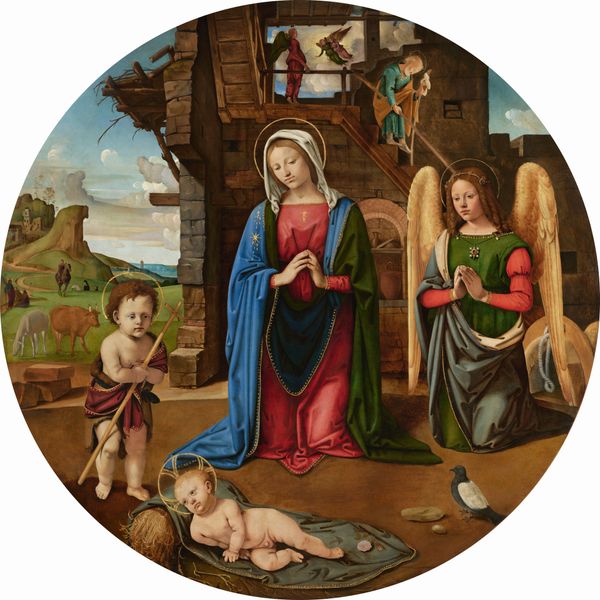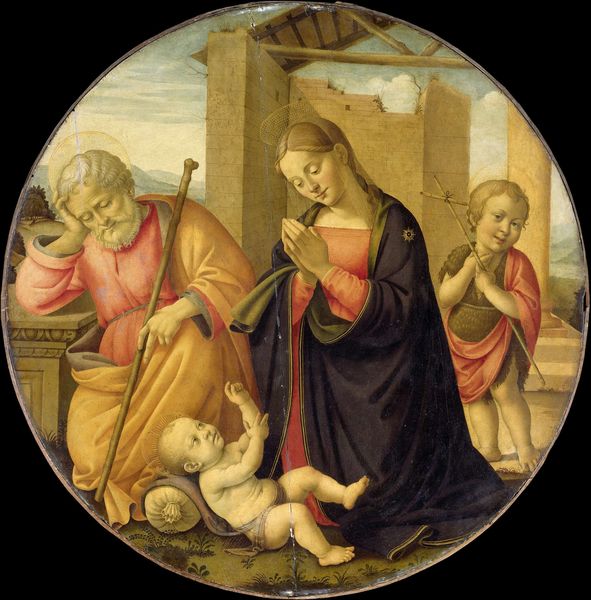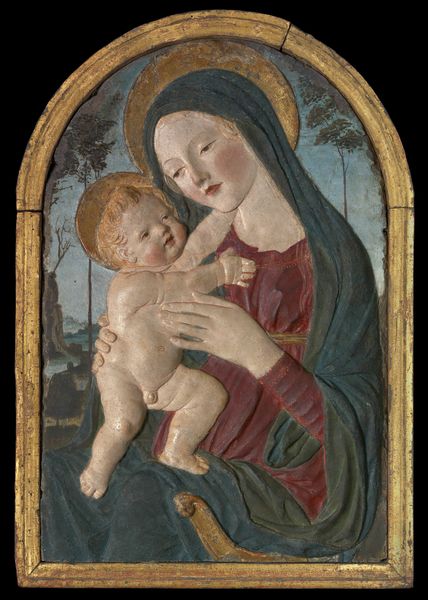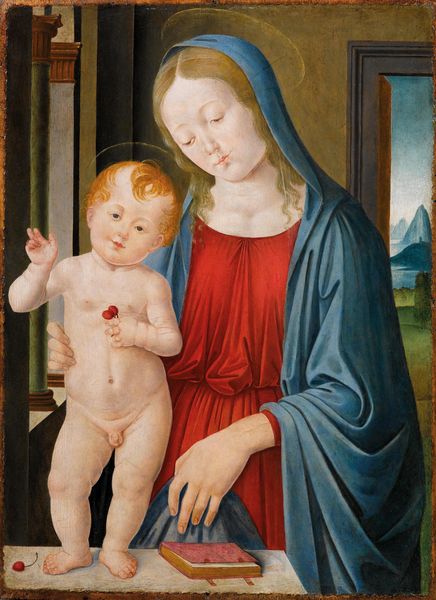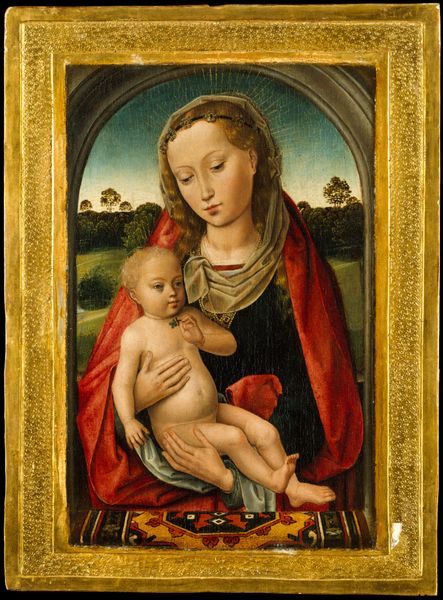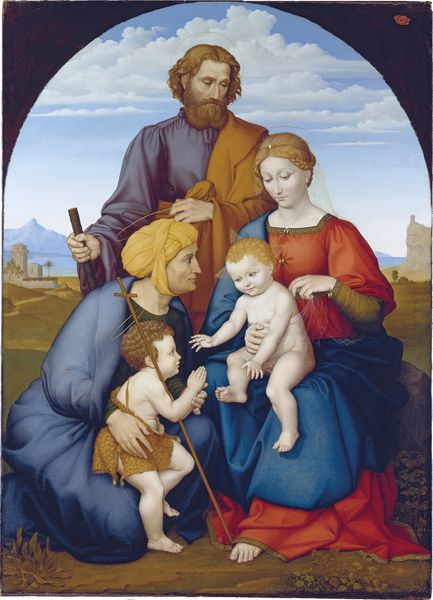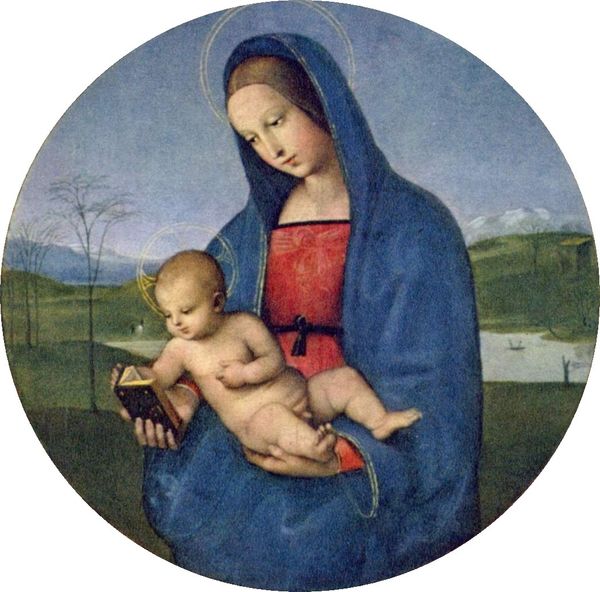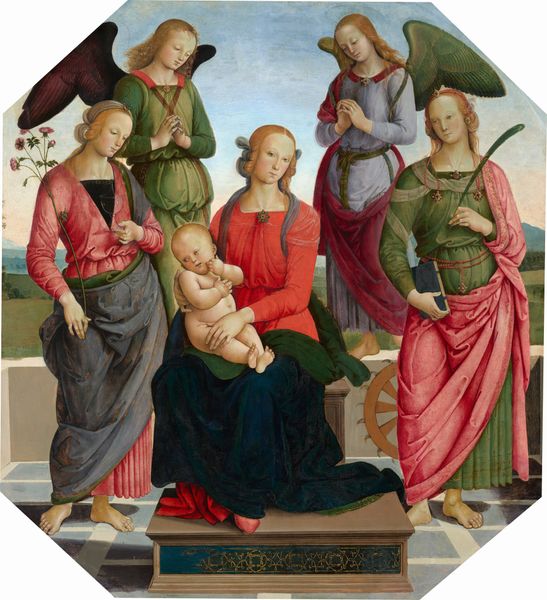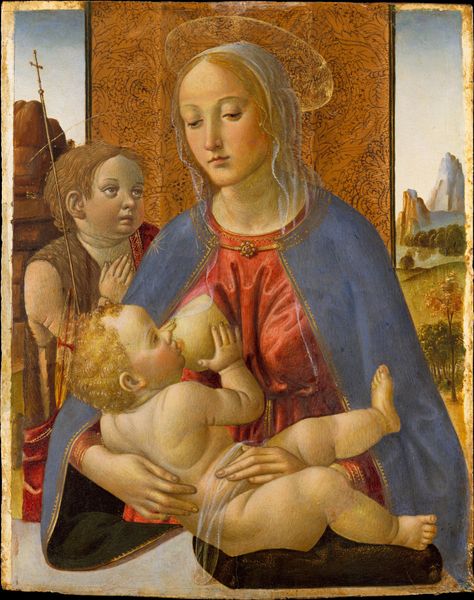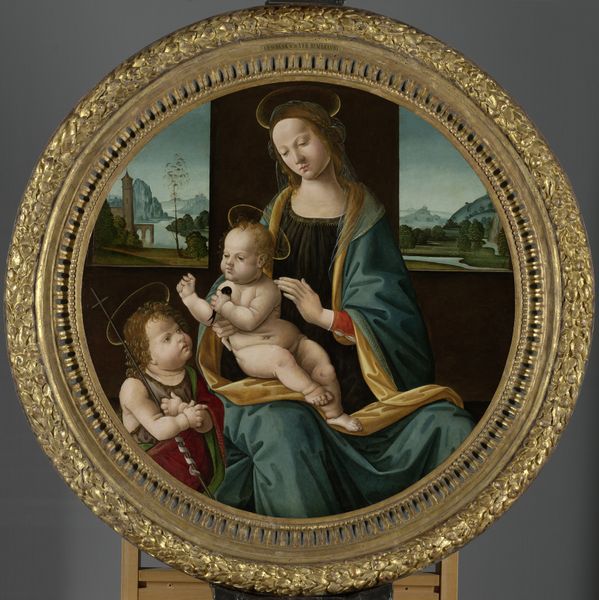
Madonna Adoring the Child with the Infant Saint John the Baptist and an Angel 1490
0:00
0:00
tempera, painting
#
tempera
#
painting
#
figuration
#
madonna
#
child
#
history-painting
#
italian-renaissance
#
early-renaissance
#
angel
Dimensions: Diameter 36 in. (91.4 cm)
Copyright: Public Domain
Curator: Here we have Lorenzo di Credi's “Madonna Adoring the Child with the Infant Saint John the Baptist and an Angel,” created around 1490. It’s currently housed in the Metropolitan Museum of Art. Editor: Immediately, the overwhelming sensation is one of serenity, almost unnerving in its placidity. Everyone seems lost in their private meditation or contemplation, caught in their own little world, while inhabiting the same plane. Curator: Credi really embodies the Early Renaissance focus on idealised beauty and classical harmony. Tempera on wood creates a uniquely luminous quality, doesn’t it? A bit dreamlike? Editor: The dreamlike aspect is exactly where my eye wanders. I’m also intrigued by the figures inhabiting a landscape defined by serenity, juxtaposed with the social, political, and religious upheavals of late 15th-century Florence. Were these tranquil images simply fantasies or perhaps expressions of a desire for something else? Curator: A longing, perhaps, for a lost Eden. Notice how the angel gently presents Saint John, their expressions mirroring adoration of the infant Christ. The symmetry and pyramidal composition, typical of the period, also contribute to this profound sense of peace and order. There's almost an echo of Leonardo's style. Editor: Though the Madonna has always been considered an archetypal figure of feminine piety and motherhood, there is the question of what this idealized image of motherhood asks from the rest of us, especially those who don’t, cannot, or won’t pursue it. Is it about aspiration, social constraint, or a kind of unyielding tradition? Curator: Oh, that's quite a thread to pull! Maybe it's about how art often holds up mirrors to our own desires and cultural norms, both the beautiful and the potentially oppressive. Perhaps that disquiet we sense isn't in the painting itself, but in ourselves? Editor: Exactly, the artwork as a vessel for reflecting upon, critiquing, and maybe even dismantling those norms that confine us, challenge them or subvert them. Food for thought, anyway! Curator: Indeed! This piece can lull you into a quiet appreciation of loveliness or invite us to examine what such carefully constructed visions ask of us. What is a "Madonna" or for that matter an "Angel," anyhow?
Comments
No comments
Be the first to comment and join the conversation on the ultimate creative platform.
